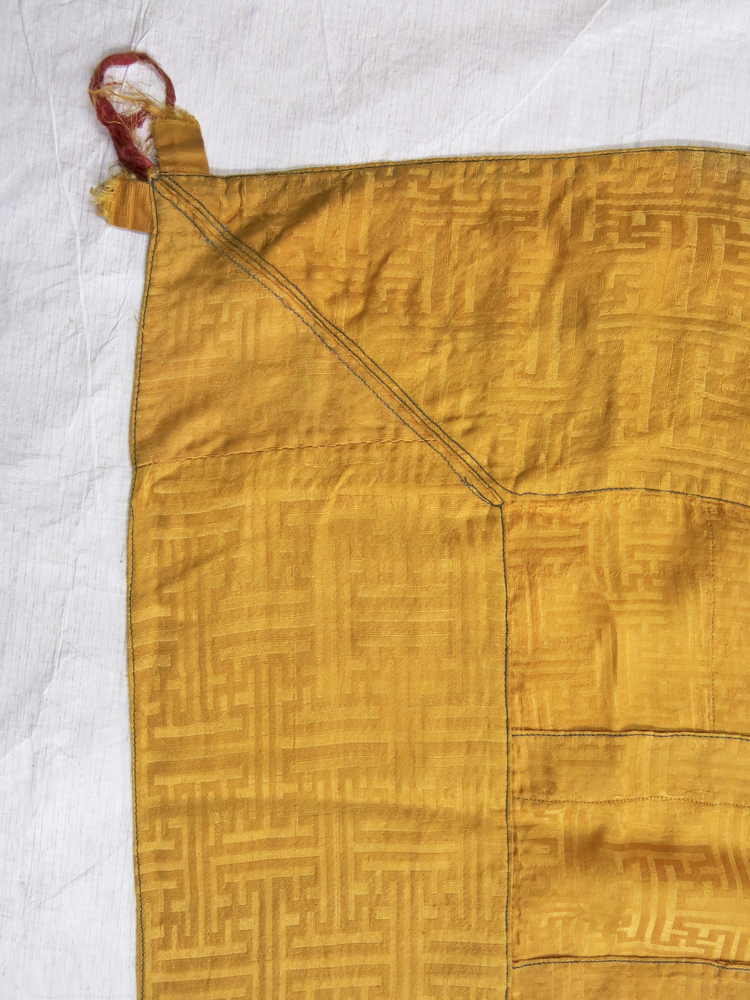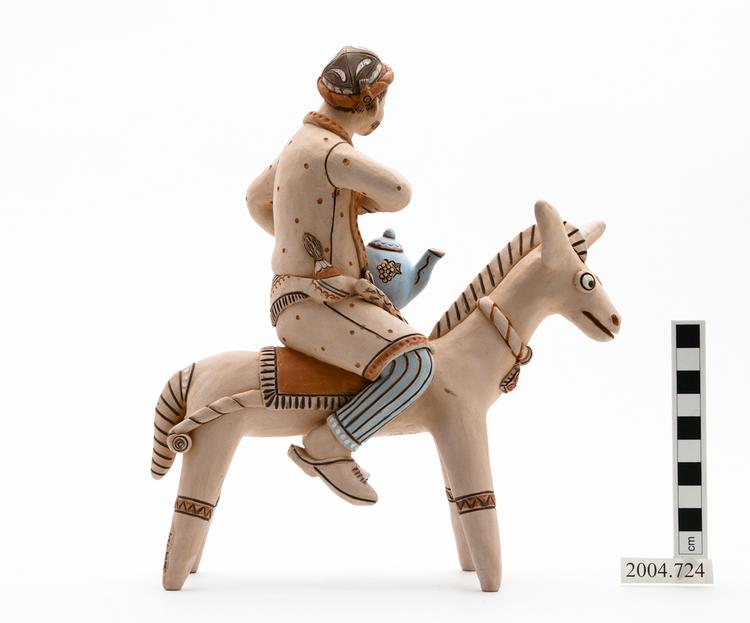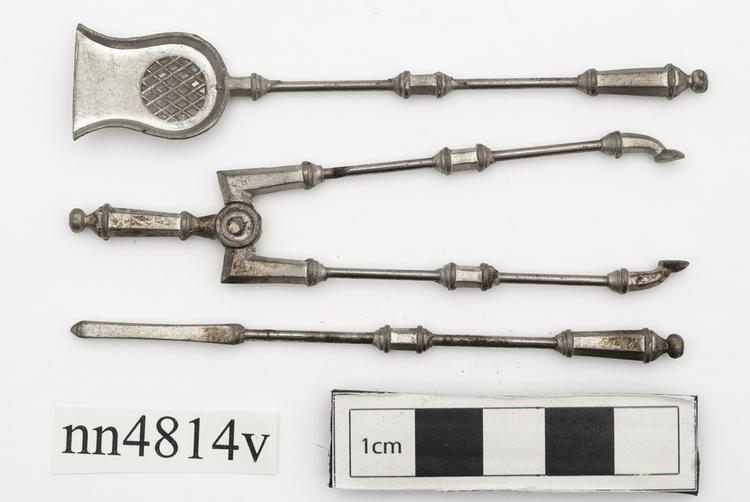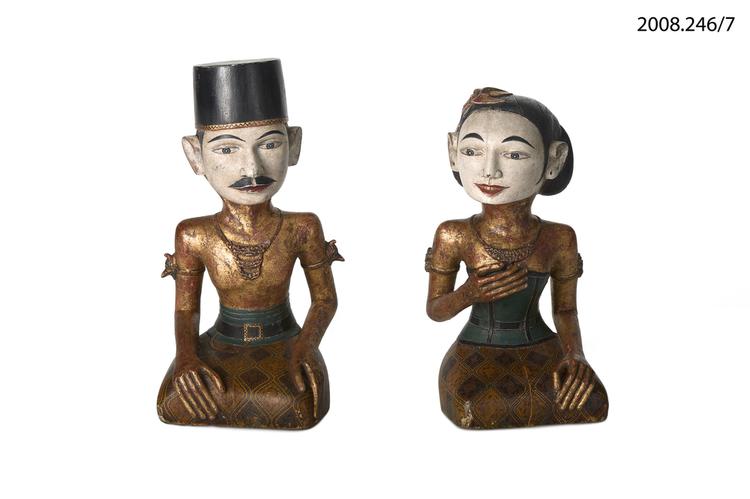
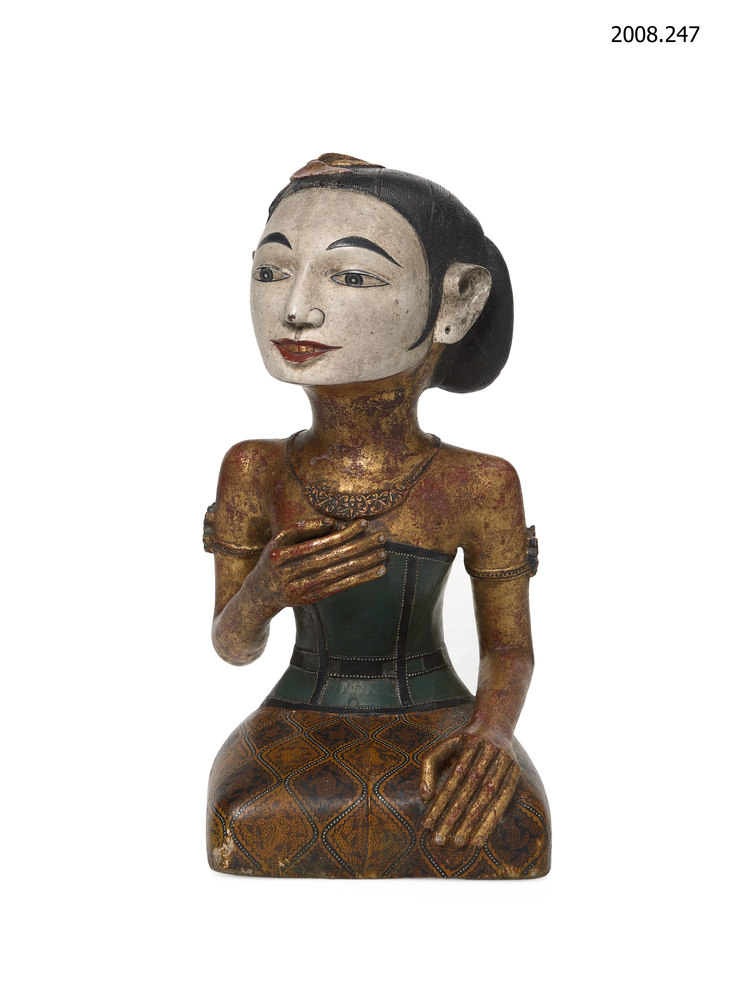
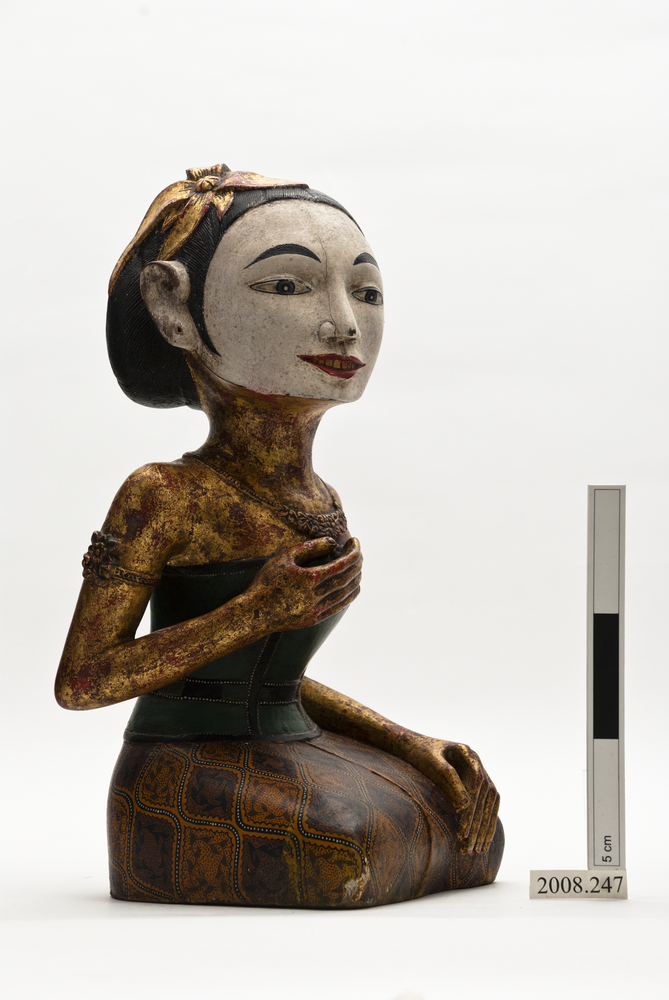
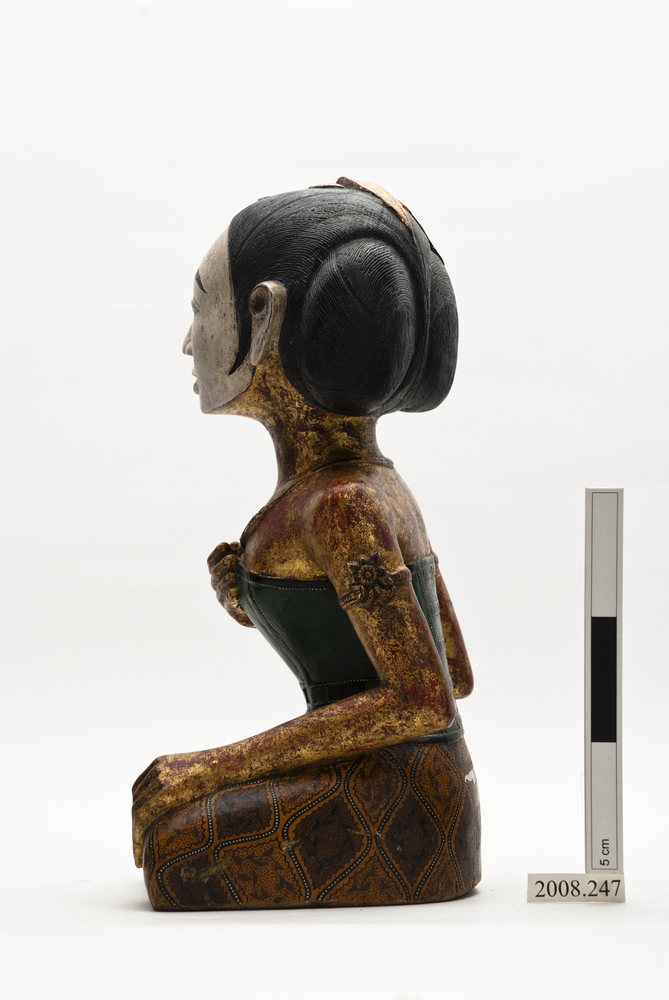
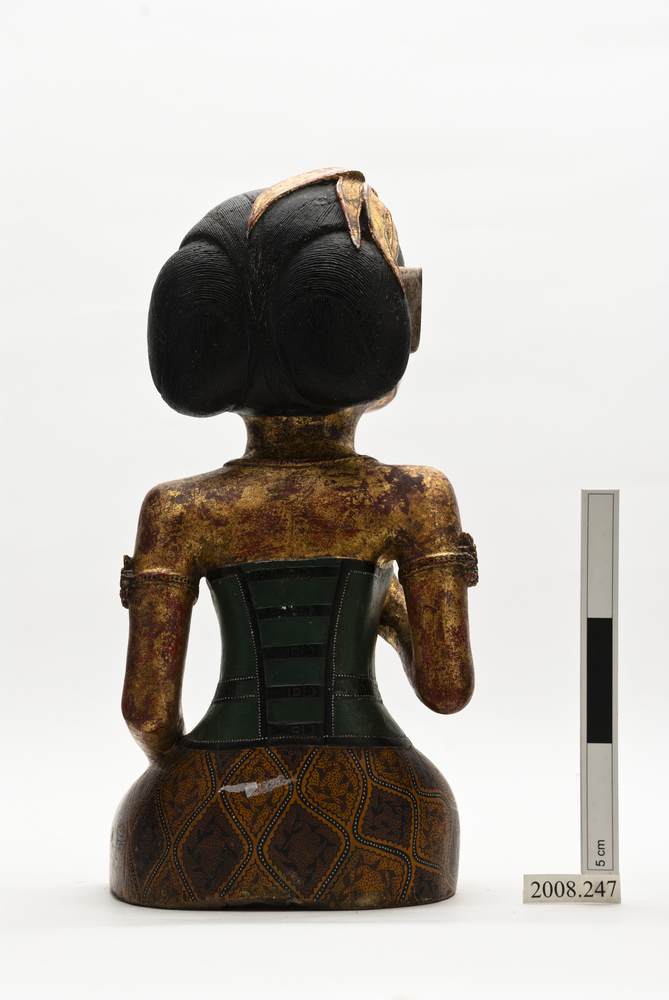
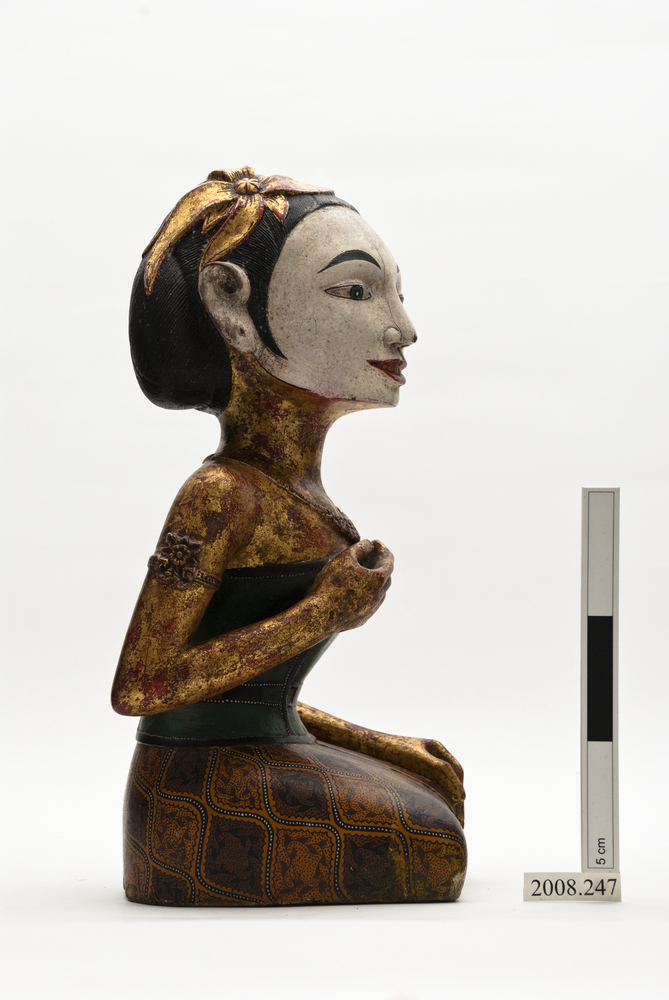
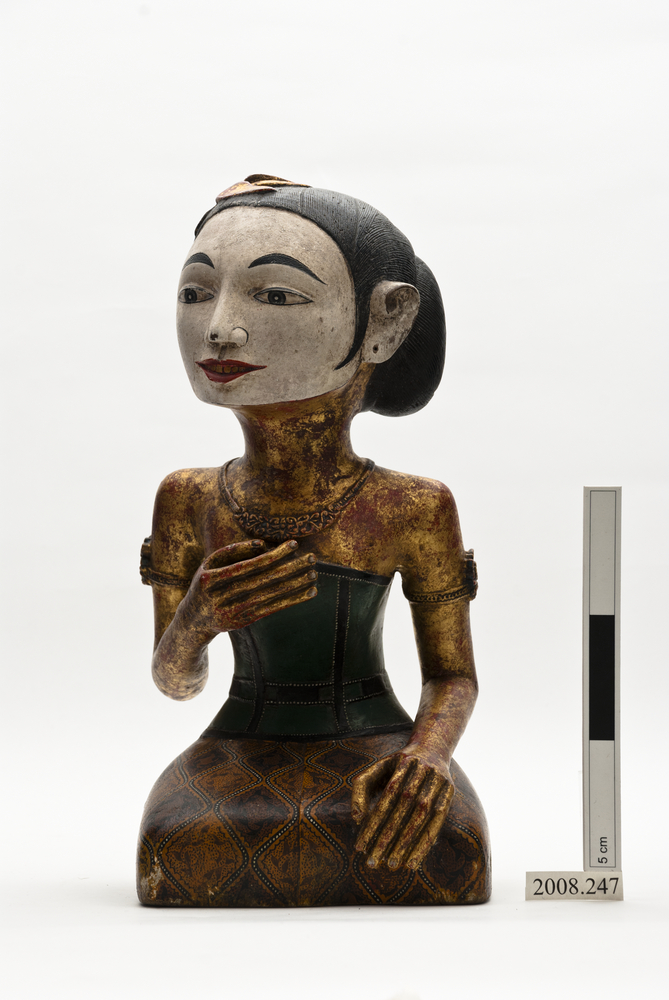
One of a pair of loro blonyo figures used during wedding ceremony. See 2008.246. Carved and painted wooden figure of Dewi Sri, kneeling. Face painted white with red lips and gold teeth, gold flower in hair which is drawn back into two buns, one at each side. Arms, bare shoulders and neck are painted gold with traces of red. Armlet on each upper arm. Necklace with wide pendant. Left hand rests on knee, right hand on breast. Sleeveless upper body garment indicated in green with vertical and horizontal black bands. Batik skirt cloth, kain, indicated in light and dark brown with detailed pattern contained within lozenges.
Free-standing pairs of sculptures like these 'marriage figures', are placed in the bedroom of a newly married husband and wife, or on either side of their house entrance. Amongst upper class Javanese this would be a popular gift. The 'loro blonyo' (inseparable couple) are Dewi Sri, Hindu goddess of agricultural fertility and her husband Raden Sadono. During the traditional Javanese wedding, figures like these are placed in front of the canopied marriage bed and as the ceremony begins, they are replaced by the real bride and groom. They believe that happiness, children and prosperity are secured when they are in the home. The figures may be represented in traditional or modern Javanese dress and although the loro blonyo are most common, other pairs are sometimes seen such as the clown-servants, Gareng and Petruk.



